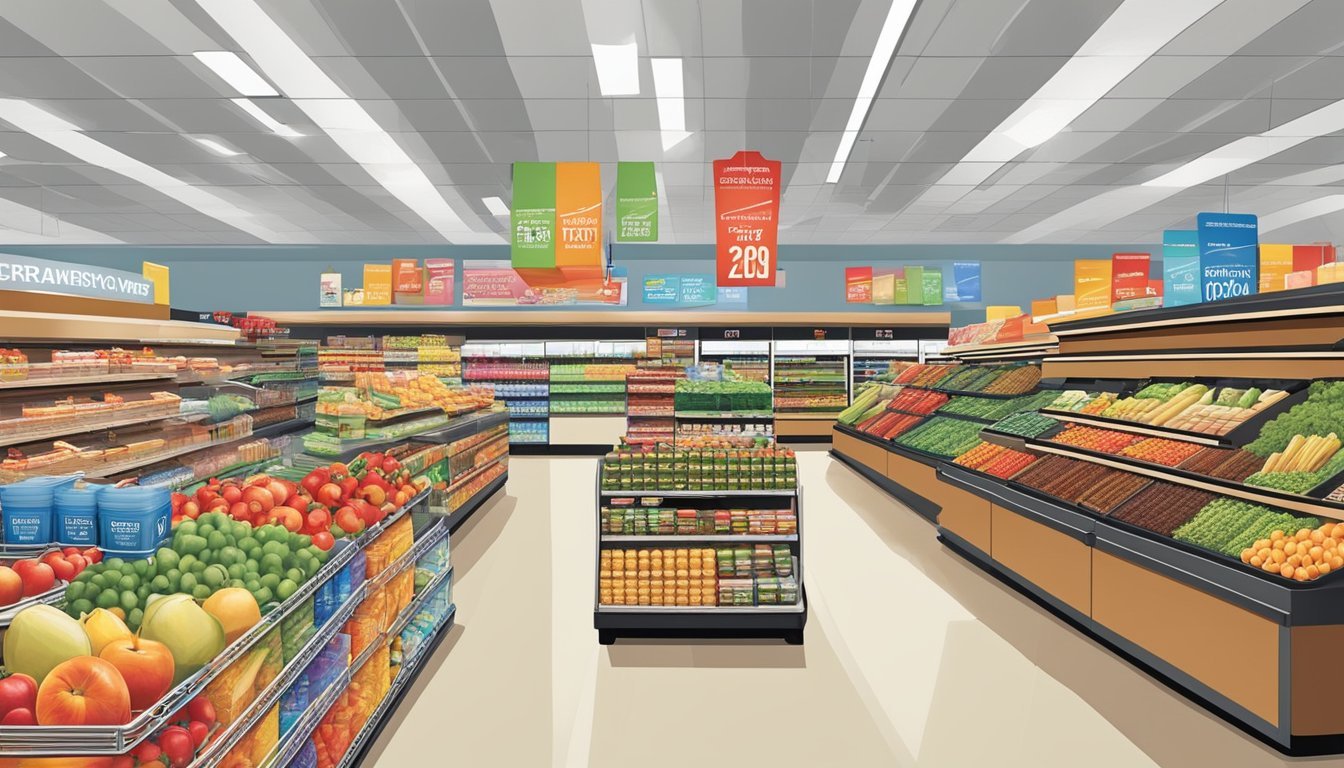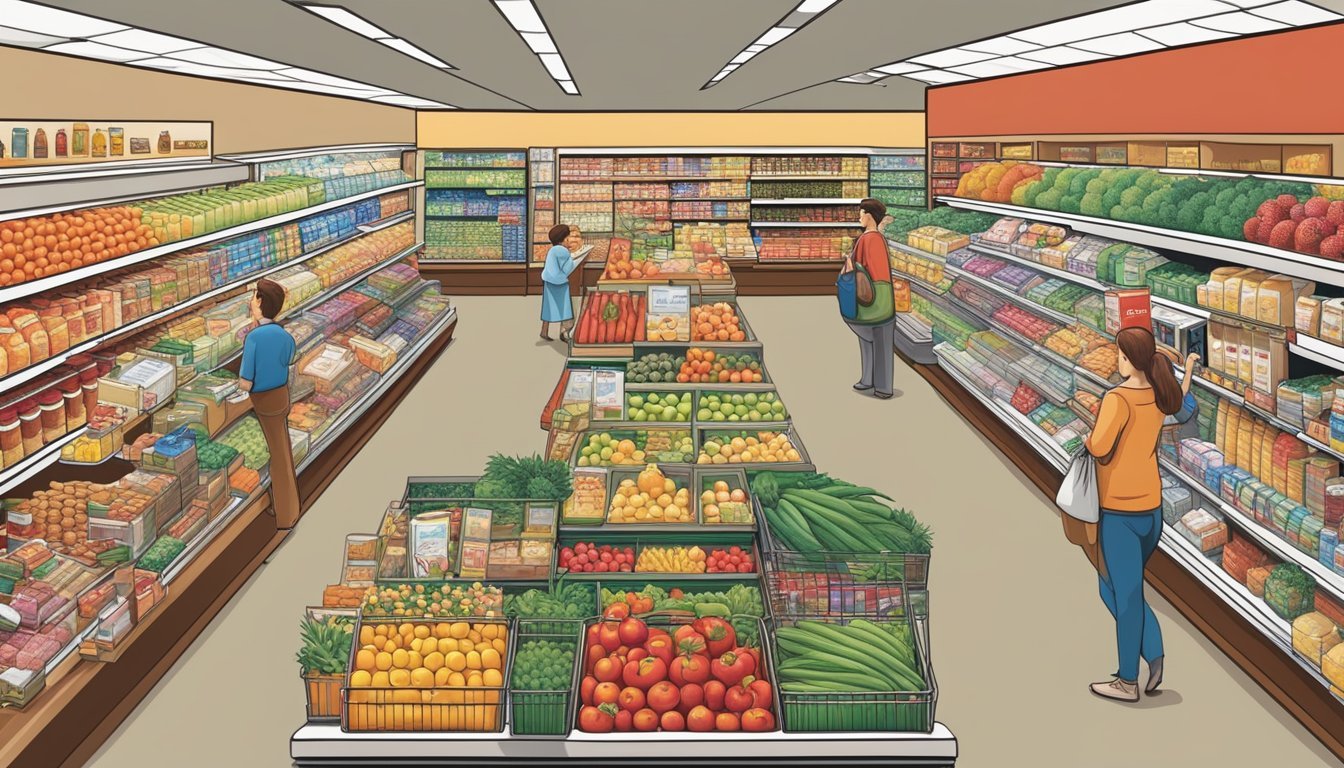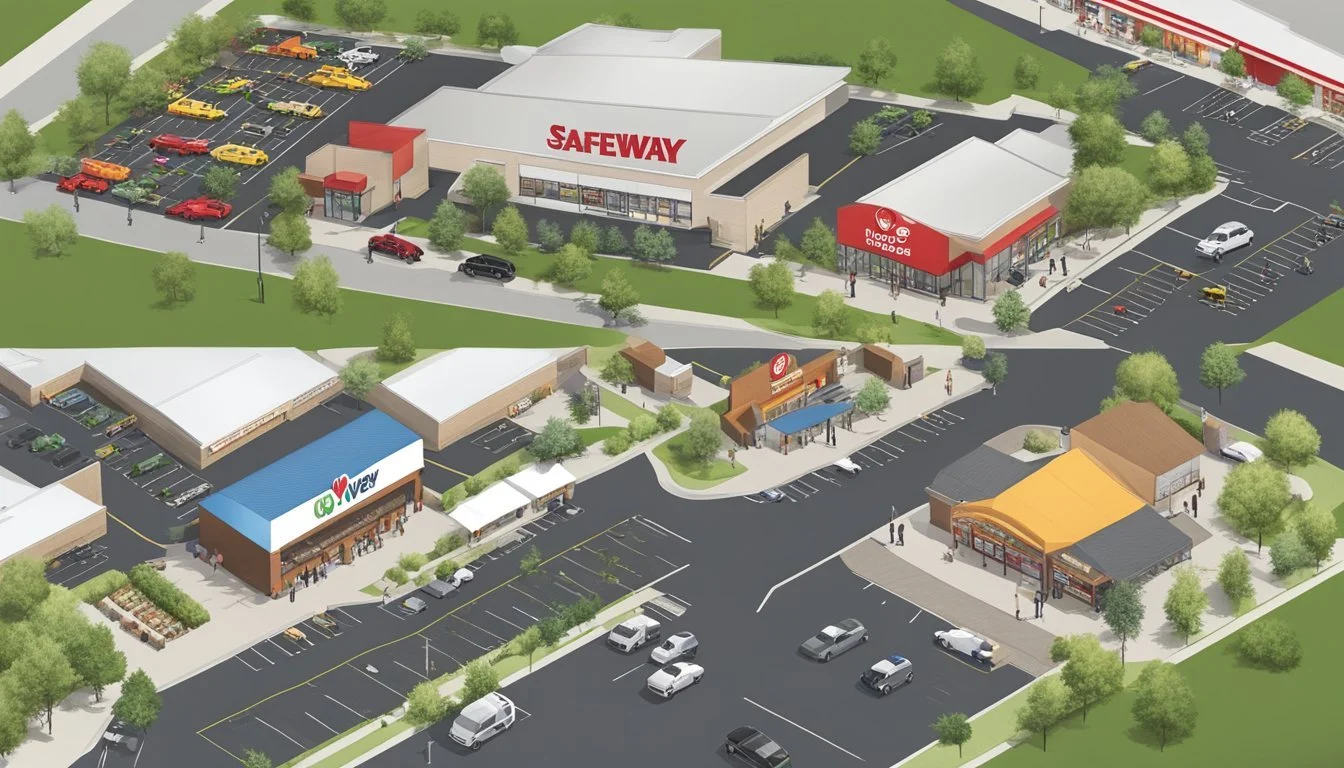Safeway vs Hy-Vee
Comparing Prices, Quality, and Shopper Experience
Evaluating grocery stores often boils down to individual shopper priorities—be it pricing, product variety, quality, or customer service. Safeway and Hy-Vee are two major supermarket chains that have established themselves as staples in many American households. While Safeway has a significant presence mainly in the western and central parts of the United States, Hy-Vee is predominantly found in the Midwest, offering a range of goods from fresh produce to general merchandise.
When comparing Safeway to Hy-Vee, consumers consider multiple factors. Safeway, known for its extensive organic offerings and private label brands, has positioned itself as a one-stop-shop for quality groceries. On the other hand, Hy-Vee prides itself on customer service, cleanliness, and the commitment to a pleasant shopping experience, often featuring in-store dining and specialty services. Both stores have taken steps to adapt to the evolving retail landscape, incorporating online shopping and delivery options to cater to the convenience-driven shopper.
Company Backgrounds
In the landscape of American grocery stores, two prominent names are Safeway and Hy-Vee, each with its own rich history and regional influence. The former operates substantially on the West Coast while the latter is a staple in the Midwest.
Safeway Overview
Safeway began its journey in 1915, building a reputation as a significant supermarket chain with a broad presence in the Western United States. With its headquarters in Pleasanton, California, Safeway has expanded to encompass numerous stores across America. While catering to various grocery needs, the store is known for its private label brands which offer a range of products from basic pantry staples to upscale gourmet selections.
Hy-Vee Overview
Hy-Vee embarked on its path in 1930 from Beaconsfield, Iowa. This employee-owned supermarket chain prides itself on its Midwestern roots and has consistently maintained its regional presence, with stores primarily spread across the Midwest. Hy-Vee has cultivated a loyal customer base by emphasizing customer service, community involvement, and a wide array of departments from full-service restaurants to fitness centers in certain locations.
Price Comparison
In analyzing Safeway and Hy-Vee for their pricing strategies, it's crucial to note that both stores offer a range of prices, sales, and store brands, making them competitive in different market segments.
Overall Pricing
When considering overall pricing, surveys indicate that both Safeway and Hy-Vee offer competitive prices across a variety of items. However, they may not consistently beat warehouse stores like Costco or discount retailers such as WinCo and Walmart, which typically have lower prices due to their bulk sale and discount models. On average, Safeway and Hy-Vee's prices on common food items, produce, and meats may be slightly higher compared to these discount stores, reflecting their positioning in the market as offering a blend of value and service.
Store Brand Pricing
Store brands are a key area where Safeway and Hy-Vee can compete with larger retailers. Both grocery chains offer their own store brands, priced lower than national brands, providing customers the opportunity for savings. For instance, Safeway's store brand products, including everyday essentials such as bread and dairy, verge on the more affordable side, as do Hy-Vee's store brand items. These store brands are often comparable in quality to national brands, yet more cost-effective, allowing customers to save without compromising on taste or quality.
Sale and Discount Strategies
Both stores employ different sale and discount strategies to attract consumers. Safeway often uses loss leaders and frequent sales to bring customers into the store, with savings advertised in weekly flyers. Hy-Vee similarly uses sale prices to drive foot traffic, often providing additional discounts to card members. Amazon Prime members shopping at Safeway can sometimes enjoy prime discounts, a strategy leveraging the store's partnership with Amazon. Whereas, Hy-Vee's discounts are often highlighted through their fuel saver programs and in-store promotions, incentivizing regular shopping trips and larger basket sizes.
By providing a range of pricing options across various categories, both Safeway and Hy-Vee work to offer value to their customers. While neither may be the cheapest option on the market, especially when compared to stores like Walmart or Costco, their pricing strategies reflect a balance between cost and convenience.
Product Selection and Quality
When deciding between Safeway and Hy-Vee, shoppers consider the variety and quality of products offered. Both stores are known for their extensive food selections, but they each have their unique strengths in terms of product quality and availability.
Variety of Products
Safeway boasts a comprehensive selection, with a wide range of groceries that include store brands and whole foods. Customers can find everything from basic staples to specialty items in their extensive aisles. The store's offerings cover produce, meat, deli, and baked goods, with a significant focus on organic and gluten-free options.
Hy-Vee, on the other hand, also offers a rich variety of products, with a notable emphasis on health and wellness. Their HealthMarket sections feature a curated assortment of organic produce, gluten-free items, and natural foods. Their product range extends to encompass a robust fresh market experience, with a wide array of high-quality produce and meat products.
Quality of Goods
In terms of quality, Safeway's store brands are known for being reliable and cost-effective alternatives to national brands. They frequently offer organic and high-quality options, giving customers a value for their money without compromising on quality. Safeway's organic produce is sought after for being both affordable and of high quality.
Hy-Vee places a high value on the quality of their goods, especially their meat and deli sections, which are often praised for their freshness. Their commitment to quality is evident in their range of fresh market items, like vegetables and baked goods, which are regularly replenished to ensure customer satisfaction.
Freshness and Availability
Regarding freshness and availability, both supermarkets strive to keep a fresh stock of products. Safeway ensures the consistent availability of fresh items, with daily deliveries of produce and meat. They pride themselves on offering various freshly-baked goods and prepared foods daily.
Hy-Vee is similarly committed to freshness, with a reputation for offering freshly-cut meat from their butchers and a wide variety of fresh produce that is well-stocked and seasonally diverse. Their store layout is designed to highlight the availability of fresh foods, ensuring customers have access to the freshest options possible.
Store Experience
When comparing Safeway and Hy-Vee, the store experience can greatly influence customer preference. This includes the quality of customer service, the ease of navigating the store layout, and the efficiency of the checkout process.
Customer Service
At Safeway, customers often report a satisfactory level of service with staff being generally helpful and polite. Hy-Vee is known for a strong emphasis on customer service, often going above and beyond to meet customer needs. Both stores invest in training employees to ensure shoppers receive knowledgeable assistance.
Store Layout and Design
Safeway stores present a traditional layout that customers are familiar with, making navigation relatively straightforward. The store brand sections are prominently displayed, catering to budget-conscious families. Hy-Vee, on the other hand, offers varying store formats that can range from compact urban stores to sprawling suburban locations. Their focus is on an intuitive layout with thematic, seasonal, and promotional displays strategically situated to engage customers.
Checkout Efficiency
The checkout experience at Safeway typically involves several options, from self-service kiosks to staffed lanes with scales for weighing produce. Hy-Vee has also embraced technology to streamline the checkout process, often resulting in shorter wait times. Both stores have made concerted efforts to address the efficiency of checkout to accommodate the fast-paced lives of their customers.
Additional Services
When considering Safeway and Hy-Vee, their additional services such as delivery, special offers, and in-store options like delis set them apart and provide added convenience and savings to customers.
Grocery Delivery Options
Safeway offers grocery delivery through its own platform and also partners with third-party services such as Instacart. For Amazon Prime members, Safeway sometimes provides special delivery promotions. Hy-Vee, alternatively, has Hy-Vee Aisles Online, a comprehensive service that gives customers the ability to order groceries online and have them delivered.
Safeway
Own delivery service and Instacart partnership
Special promotions for Amazon Prime members
Hy-Vee
Hy-Vee Aisles Online for ordering and delivery
Special Discounts and Offers
Safeway features weekly ads, loss leaders, and Just for U discounts for personalized deals. Hy-Vee counters with its Fuel Saver + Perks program which provides fuel discounts and exclusive promotions.
Safeway
Just for U program for additional savings
Hy-Vee
Fuel Saver + Perks program for discounts on fuel and groceries
Prepared Foods and Deli
Both stores boast a variety of prepared foods and deli options. Safeway has a reputation for a wide array of grab-and-go meals, catering services, and a robust deli selection. Hy-Vee similarly offers a vast selection of prepared foods, including a notable in-store dining experience and catering options.
Safeway
Extensive deli selection
Grab-and-go meals
Catering services available
Hy-Vee
Wide variety of prepared foods
In-store dining options
Catering services available
Brand Presence and Market Reach
In the competitive grocery marketplace, Safeway and Hy-Vee command significant attention through their strategic brand presence and expansive market reach.
Regional Dominance
Safeway, a subsidiary of Albertsons, has entrenched itself predominantly in the western and central United States, with a historical stronghold along the Pacific Coast. Its regional dominance is complemented by Albertsons' nationwide footprint, which includes various other banners like Vons and Randalls. On the other hand, Hy-Vee's roots are steeply planted in the Midwest, with over 300 locations that serve as cornerstones of many communities in the region.
Safeway: Strong presence in the West, part of a larger family of stores under Albertsons Companies
Hy-Vee: Concentrated influence in the Midwest, local favorite known for a community-centric approach
National and Online Presence
While Hy-Vee has mainly focused on brick-and-mortar stores in the Midwest, it is navigating the national stage through its alternative store formats and online services. Safeway, meanwhile, enjoys visibility across America thanks to its linkage with Albertsons and partnerships that extend its reach. The online presence is bolstered by partnerships with third-party delivery services. Kroger and Walmart have set industry standards for national and online presence, with Walmart standing as a monumental retail force and Kroger as a staple grocery name across many states.
National Reach:
Safeway: Part of the broad Albertsons network with extensive national partnerships
Hy-Vee: Primarily Midwest-based, but expanding through new store concepts and online offerings
Online Presence: Both stores leverage online platforms to cater to the growing e-market, competing with entities like Amazon and Whole Foods.
Customer Loyalty and Satisfaction
Customer loyalty and satisfaction are pivotal metrics that reflect the success of Safeway and Hy-Vee's retail strategies. These factors are assessed through the efficacy of loyalty programs, customer feedback, and the stores' return and refund policies.
Loyalty Programs
Both Safeway and Hy-Vee have robust loyalty programs designed to reward repeat customers and increase overall satisfaction. Safeway offers the Just for U program, providing members with personalized deals and digital coupons based on their purchase history. Meanwhile, Hy-Vee's Fuel Saver + Perks program allows customers to earn discounts on fuel and receive exclusive promotions.
Survey Results and Feedback
Survey results and feedback serve as indicators of a store’s performance in meeting customer needs. Safeway and Hy-Vee regularly solicit feedback to gauge service levels and address concerns. A loyal following often responds to these surveys, which can lead to service enhancements. For example, Safeway collects customer feedback through its online platform, and Hy-Vee uses its customer care center to manage direct feedback, both positive and critical.
Return and Refund Policies
Safeway and Hy-Vee have clearly articulated return and refund policies that contribute to customer satisfaction. They emphasize a hassle-free return process. Safeway allows returns at any of their locations, and refunds are typically issued to the original form of payment. Hy-Vee similarly offers refunds or exchanges, provided customers have the receipt, reinforcing trust and encouraging a loyal customer base.
Comparative Analysis of Target Markets
In the competition between Safeway and Hy-Vee, understanding their target markets is crucial for discerning their appeal to specific demographic groups and assessing their geographical influence over various American regions.
Demographic Appeal
Safeway markets itself to a broad demographic, including families and individual customers across its locations. It tends to focus on value and convenience, aiming to appeal to middle-income consumers who seek quality and affordability. Safeway's marketing campaigns often highlight deals and loyalty programs which resonate with cost-conscious families. In contrast, Hy-Vee places a strong emphasis on customer service and community engagement, crafting an image that attracts not only cost-aware families but also health-conscious shoppers with its Health Market departments.
Geographical Reach
Hy-Vee is regionally concentrated, primarily operating in the Midwestern part of the United States. Its geographical reach caters primarily to area consumers within this region. Safeway, on the other hand, has a wider geographical presence. While also strong in specific areas like Seattle, it extends beyond into various parts of America including cities such as Boston and Philadelphia. Each store curates its offerings to cater to the preferences and needs of the local demographic, working to earn the loyalty of region-specific customers.
Environmental and Social Initiatives
When comparing Safeway and Hy-Vee, it is important to look at their efforts in environmental sustainability and community involvement, two areas that significantly impact the brands' reputations.
Sustainability Practices
Hy-Vee has made a public commitment to environmental sustainability, particularly in regard to its seafood sourcing. The company has become the first Midwest retailer to source 100% of its fresh and frozen seafood from environmentally responsible sources. This shift aligns with their larger mission to conduct business in a way that promotes the well-being of the environment.
Safeway also progresses towards sustainability, offering a wide range of organic produce to meet the growing consumer demand for environmentally friendly products. The retailer has been known to incorporate sustainable practices within its operations, with efforts to manage waste and reduce its carbon footprint.
Community Involvement
Both Safeway and Hy-Vee show a strong sense of community involvement. Hy-Vee runs various initiatives to support the regions it operates in, including participating in the Beyond the Bag initiative to move away from plastic bags, which are known to be harmful to the environment. By engaging in these types of programs, Hy-Vee demonstrates their commitment to not just environmental sustainability, but also to the betterment of the community.
Safeway's approach to community involvement often includes support for local family farms by stocking and promoting local, organic produce. This not only provides fresher options for consumers but also benefits families and smaller farms within the community. Moreover, through such partnerships, they contribute to the local economy and support sustainable agricultural practices.
Conclusion and Recommendations
When comparing Safeway and Hy-Vee, customers should consider their individual shopping priorities.
Selection: Both stores offer an extensive range of products. Hy-Vee is often praised for its freshness and variety in the in-store deli department. Safeway, while offering a diverse selection, does not consistently outshine Hy-Vee in this area.
Price: Price points are crucial for families budgeting their grocery expenses. Both supermarkets provide competitive pricing; however, Hy-Vee's prices tend to be slightly higher, as indicated by customer feedback and market reports.
Family Shopping: For families, the shopping experience goes beyond products and prices, encompassing ease of shopping and customer service. Hy-Vee has a reputation for excellent customer service and a pleasant shopping environment.
Convenience: Safeway operates many locations and offers robust online shopping options, which can be a significant advantage for many shoppers looking for convenience.
Given these points, it is recommended that customers who prioritize a diverse selection and top-notch deli items head to Hy-Vee. Budget-conscious shoppers aiming for consistently lower prices might lean towards Safeway, especially if location and online shopping are determinants. Ultimately, the choice between Safeway and Hy-Vee boils down to individual preferences, with both stores being reliable contenders in the grocery store sector.










